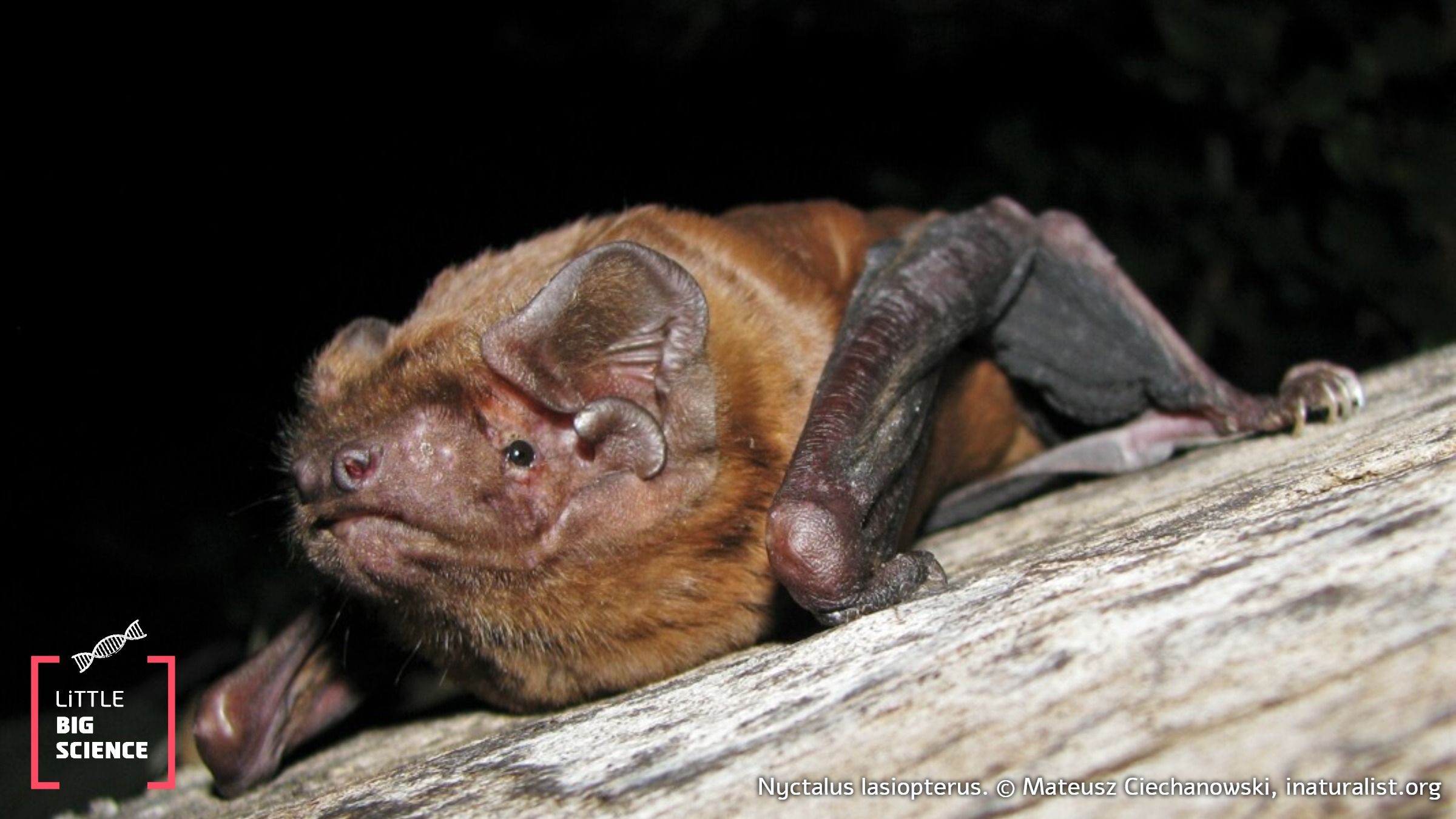
Every spring and autumn, billions of migratory songbirds fly at night at extraordinary heights. It is commonly thought that this airspace is safe from predators, especially in the darkness, but that is not the case: scientists have identified a predator that locates the birds in the dark, chases them for minutes, seizes them, and devours them – all in midair.
Advertisement
For years, scientists found only clues suggesting that bats prey on songbirds—for example, feathers in bat droppings and bird wings discovered beneath hunting grounds. But the full picture was missing: Where does this happen? How do bats reach swift prey flying high above the ground? And how do they handle prey that can weigh nearly half as much as the bat itself—all without landing?
To answer these questions, researchers tracked greater noctule bats (Nyctalus lasiopterus) in southern Spain, along one of the busiest migration corridors in the world—the route from Europe to Africa over the Strait of Gibraltar, a bird migration bottleneck similar to Israel’s. The team attached tiny tracking tags to 14 individuals and recorded flight altitude, body acceleration (wingbeat rate and strength), and the ultrasonic echolocation calls the bats use for “seeing” with sound. In addition, fecal samples were analyzed by DNA sequencing, bird wings found in the area were X-rayed for predation marks, and some even carried the predator’s DNA.
The international research team, led by Dr. Laura Stidsholt and Dr. Elena Tena-López, published its findings in the prestigious journal Science [1].
The researchers discovered that the bats do not merely eat songbirds: they detect them at high altitude, pursue them in exceptionally long sprints, seize them, bite off the wings to reduce drag, and then consume the prey in midair—unlike owls or other predators that land after capture.
Two fully documented hunting events involved climbs of several hundred meters (in one case up to ~1.2 km!) and more than forty “terminal buzz” calls (like a fighter jet locking onto a target). The recordings also captured 21 distress calls from the prey followed by 23 consecutive minutes of chewing in flight. Based on the calls, the victim was a European robin (Erithacus rubecula). For comparison, a greater noctule bat typically weighs about 60–70 g (wingspan 40–46 cm), whereas a European robin weighs about 16–22 g—meaning the prey can reach one-third of the predator’s mass or more, an exceptional ratio for an insect-eating bat.
How unusual is bird hunting compared with the bats’ regular hunting routine? Of 611 documented hunting attempts, 609 were typical “insect” chases—short pursuits at low altitude (median height ~53 m), a few buzz calls, and brief chewing, exactly as expected for small prey. The two bird-predation events stood out dramatically in intensity and duration: faster, stronger wingbeats and tight maneuvering after a single target for tens of seconds to nearly three minutes.
The bat completes the capture close to the ground, likely using its feet and tail membrane, delivers a lethal bite, then quickly removes the wings to disable the prey, enabling in-flight feeding. Consistent bite patterns in the X-rays and the predator’s DNA on recovered wings support this scenario.
Fecal samples indicate that the behavior is more common than the tag data alone suggest: on some spring nights, up to one-third of the greater noctules consumed birds, even though full documentation with tags is naturally rare.
This raises an intriguing question: How can a bird that evades diurnal raptors fall prey to a bat at night? First, songbirds rely mainly on vision, an advantage that is limited in darkness. Second, the greater noctule enjoys an almost “private channel” because songbirds detect frequencies above ~10 kHz poorly. The bat’s ultrasonic echolocation calls (above 20 kHz) are therefore nearly inaudible to them. The bat does not “switch modes” when hunting birds: the call characteristics resemble those used for insect hunting, but the chase is longer and more intense to keep up with a swift, high-enduring songbird that often reacts with sharp shifts in altitude.
On migration nights during spring and fall, a vast river of biomass—migrating songbirds—flows overhead, largely untapped by most predators. The combination of long-range echolocation, sustained aerial acceleration, and an efficient prey-processing technique allows the greater noctule to exploit a resource with virtually no competition. Open questions include whether insectivorous bats at other major migration corridors have evolved—or will evolve—similar strategies, and what long-term impact, if any, this might have in the evolutionary arms race.
Hebrew editing: Smadar Raban
English editing: Elee Shimshoni
References:







